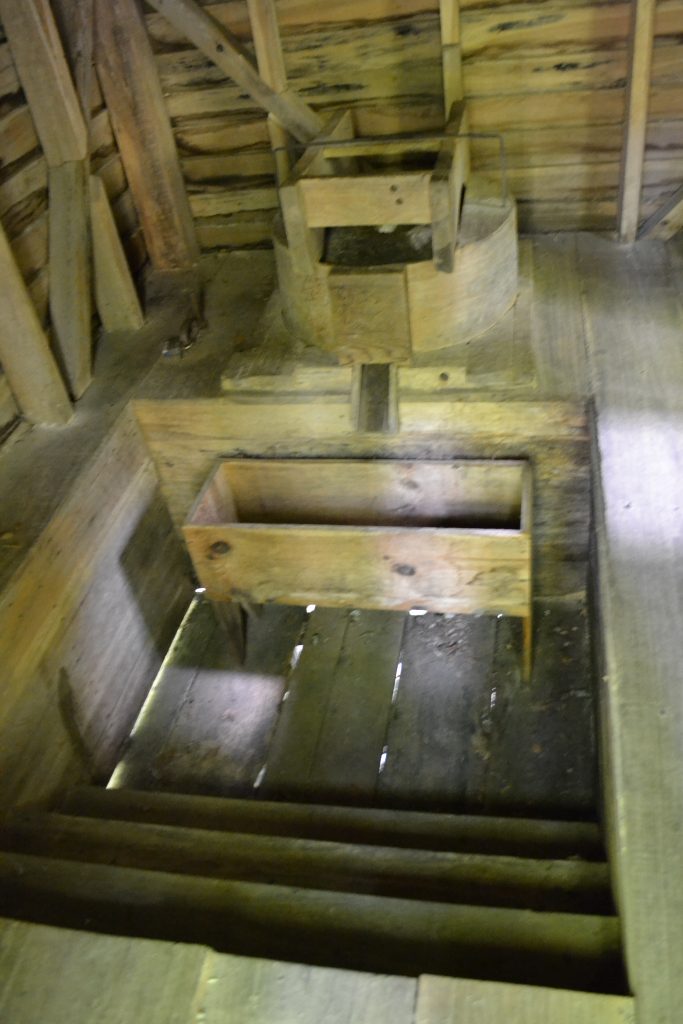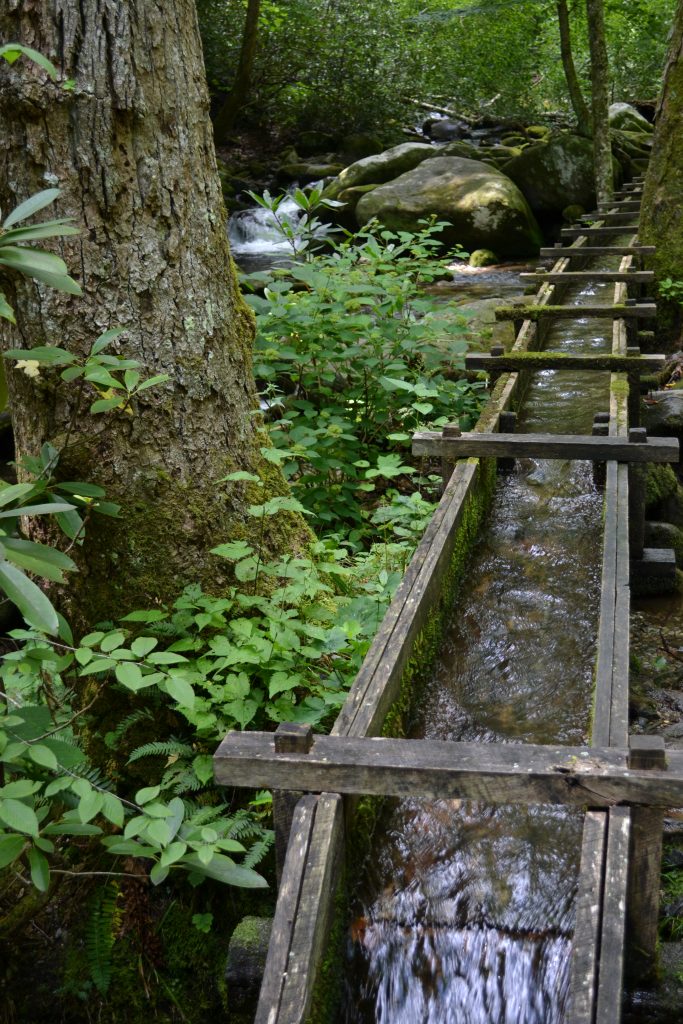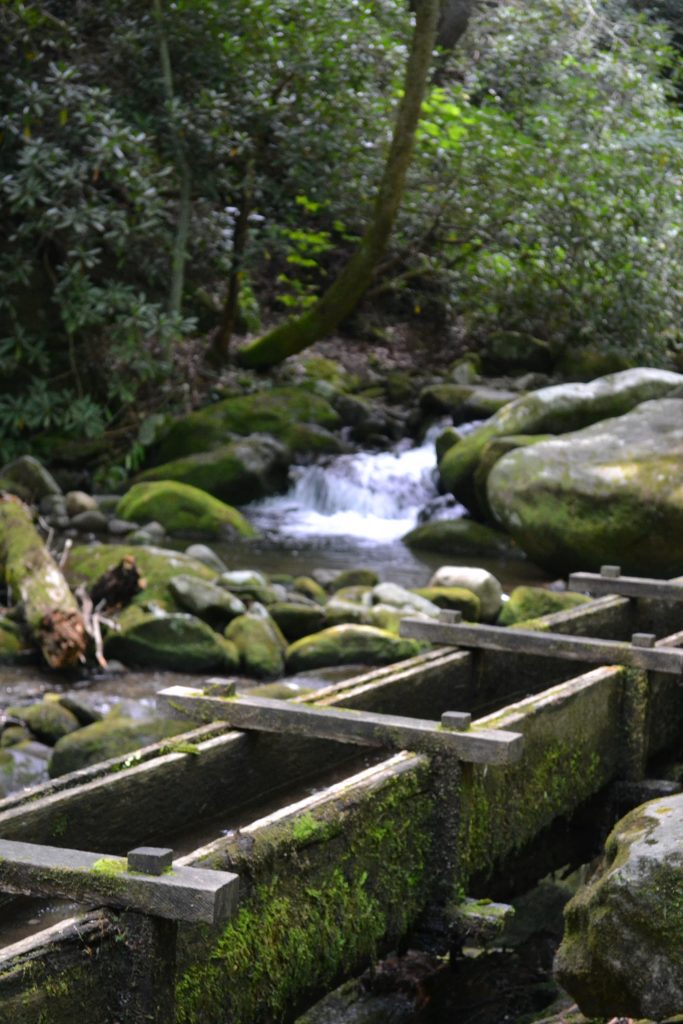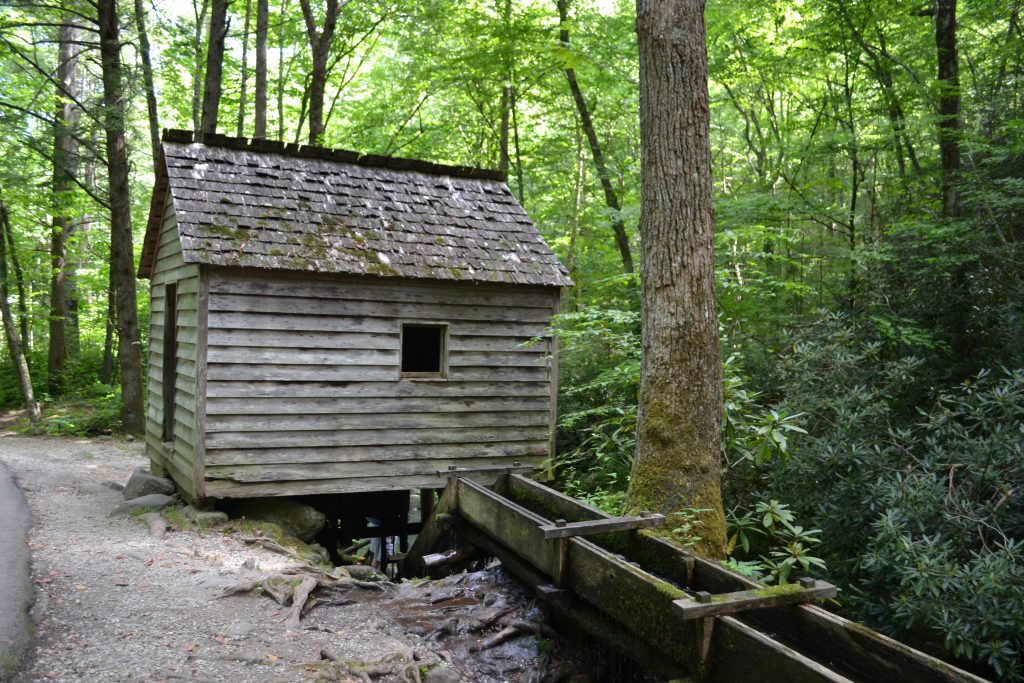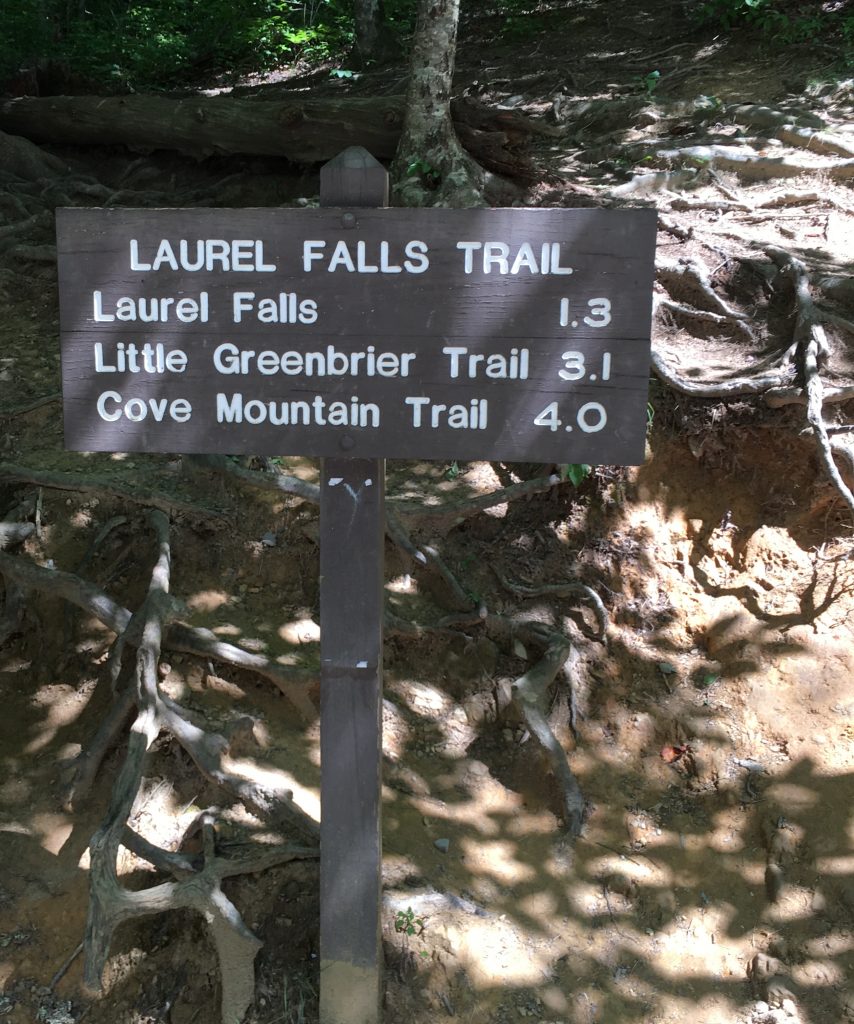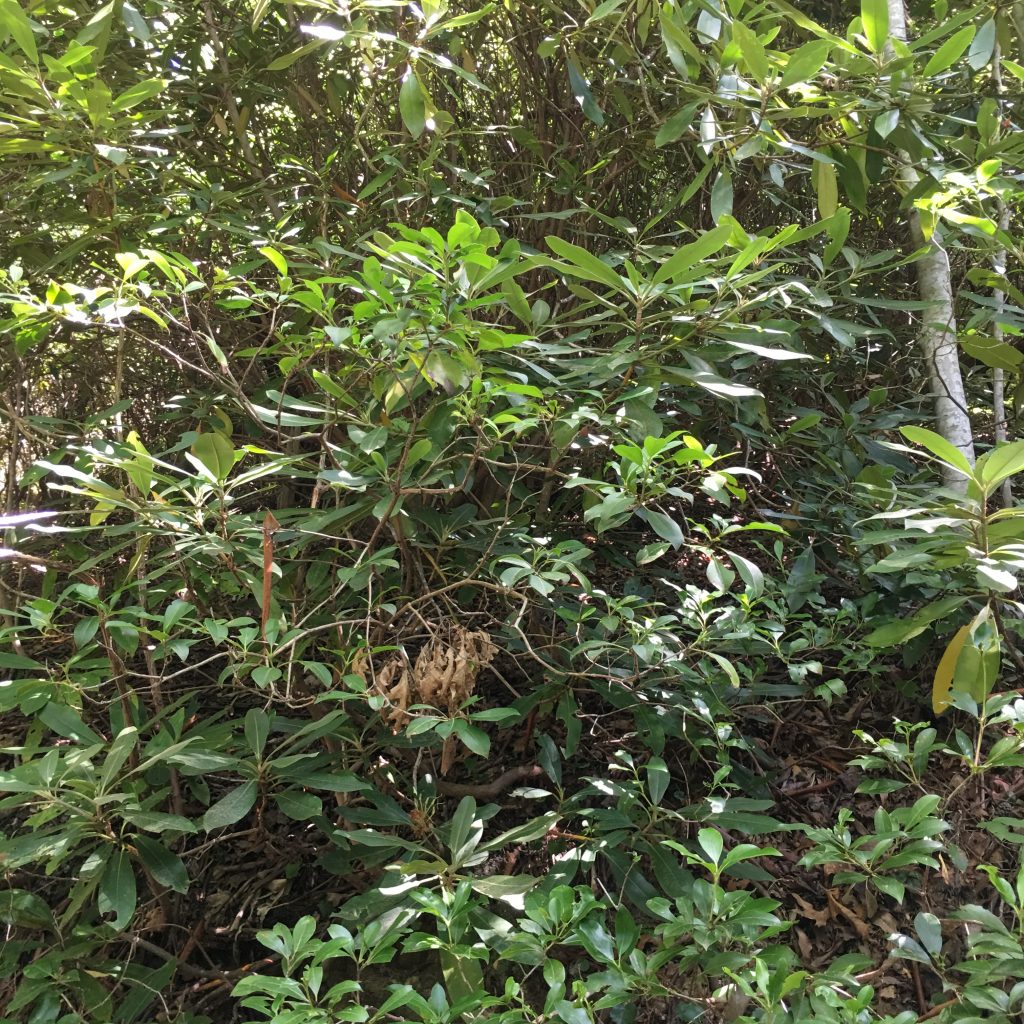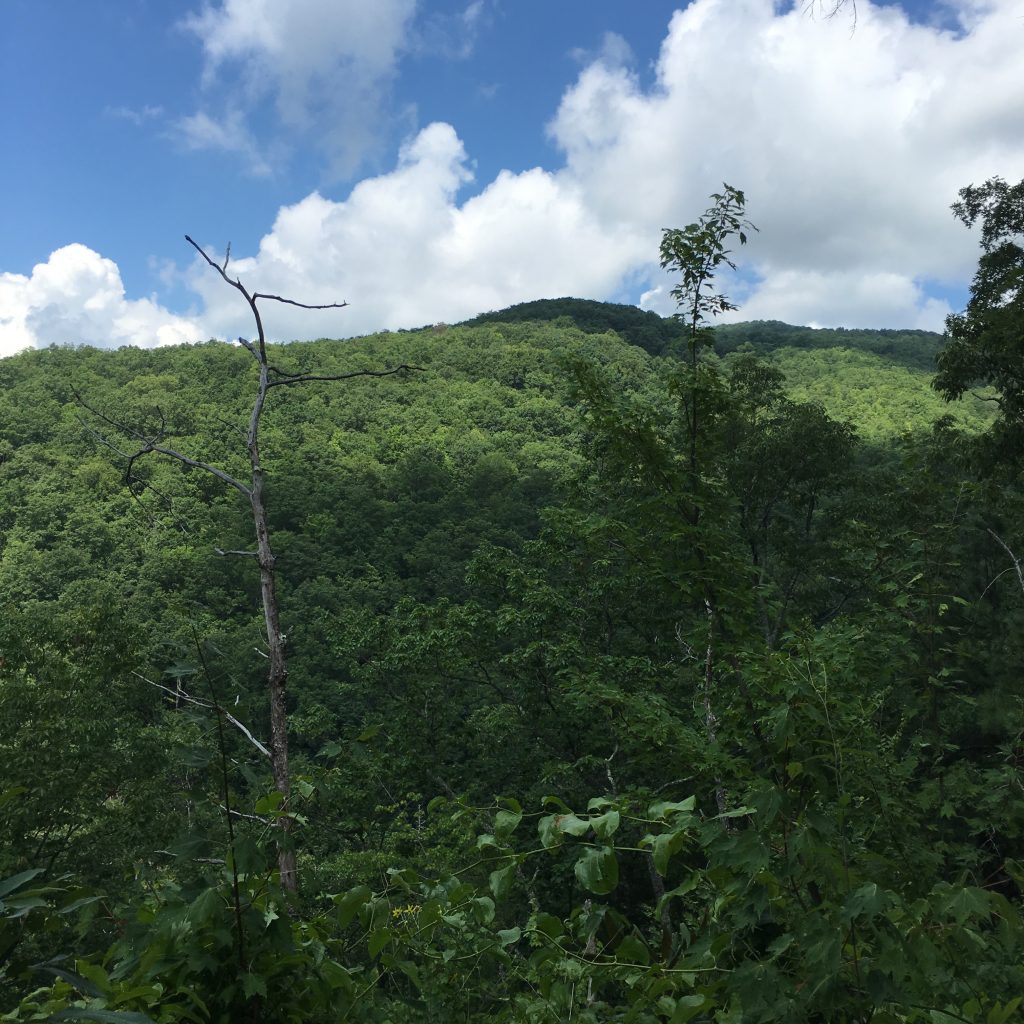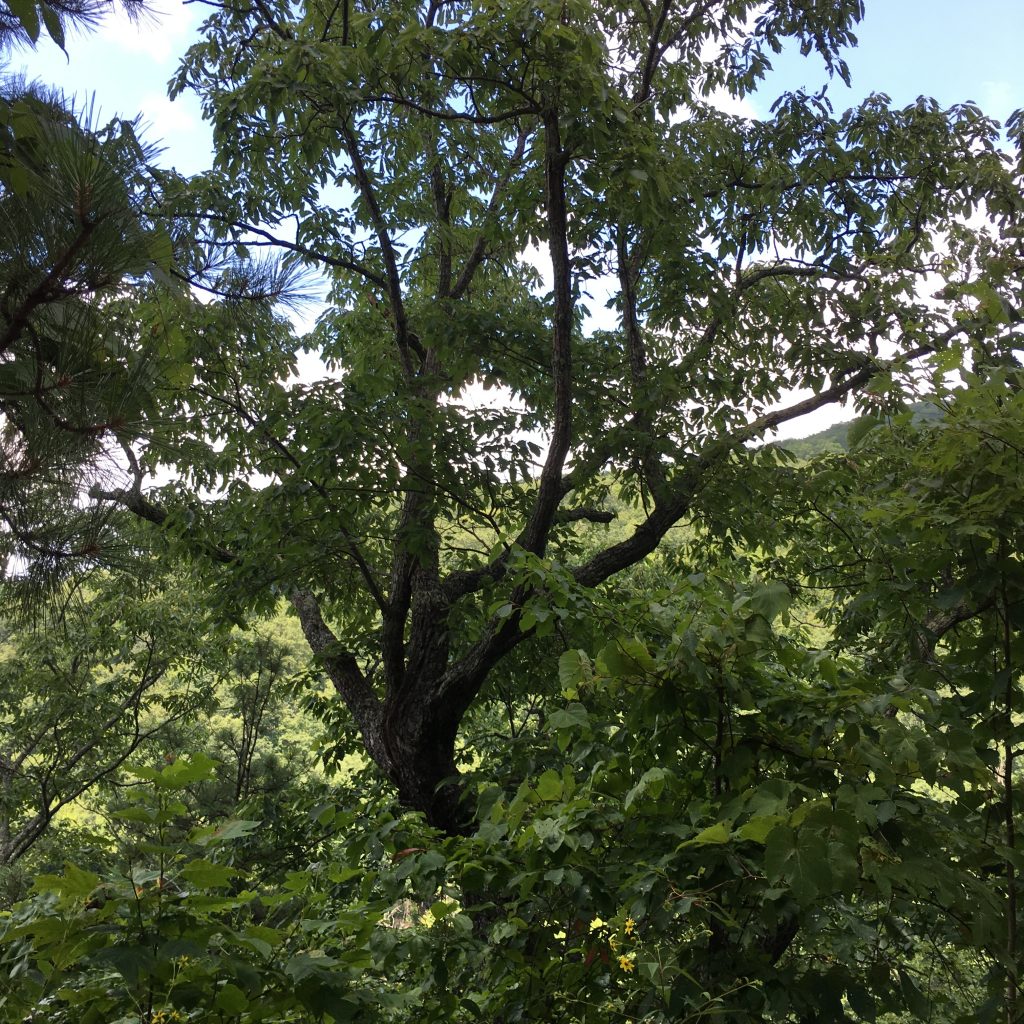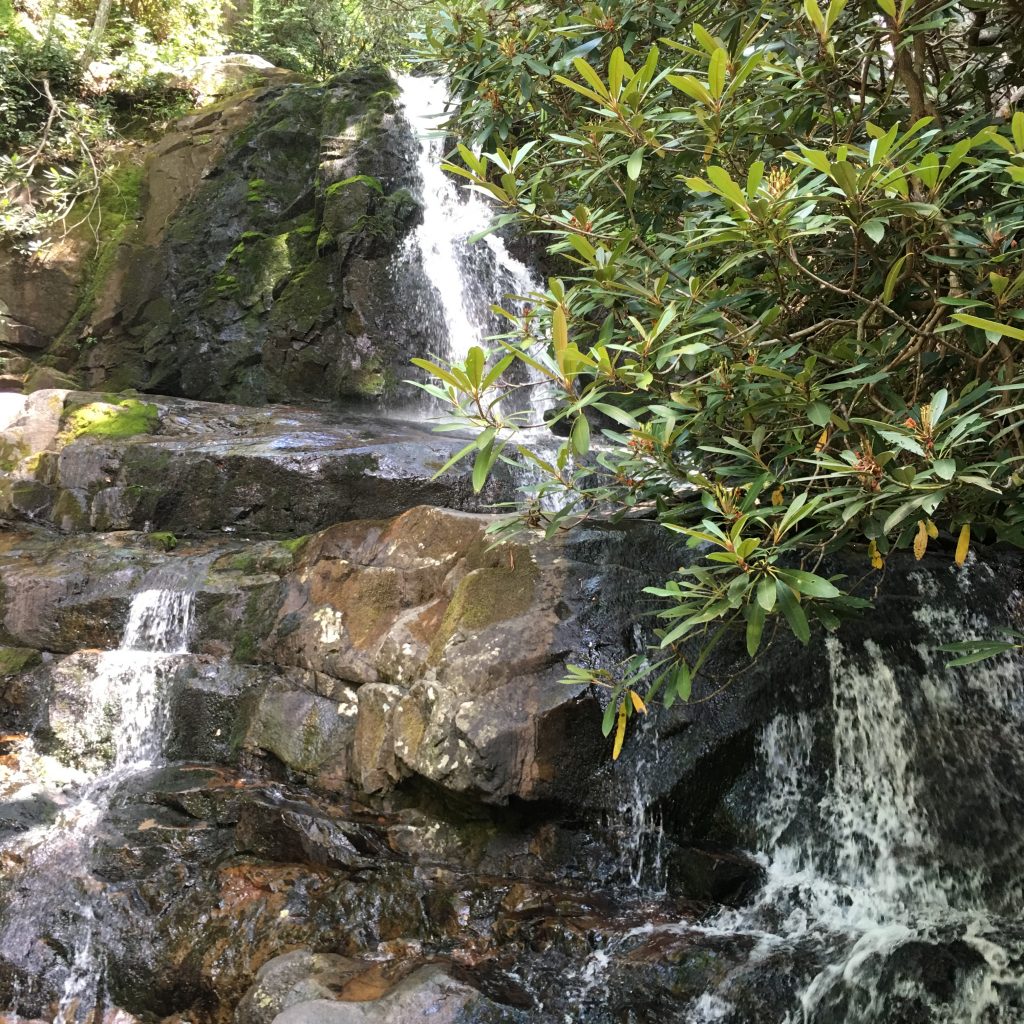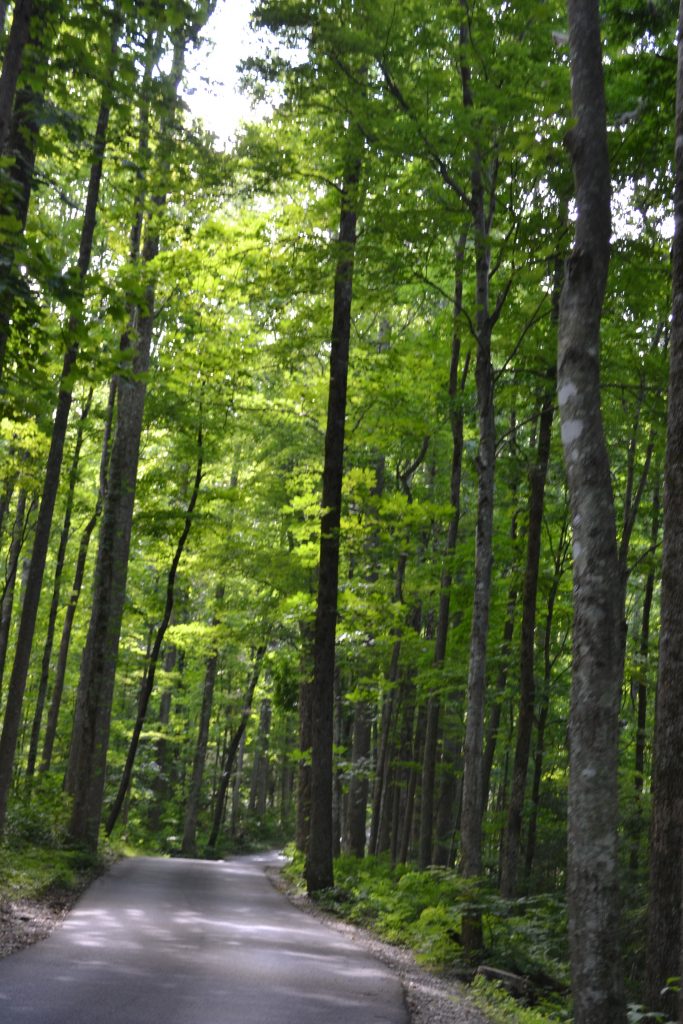
Driving along the Roaring Fork Auto Trail, I felt transported from everyday life into a quiet wilderness of serenity. Surrounded by white oak, chestnut oak, magnolia and maple trees, I could easily get lost in the moment, don a backpack and set off for an adventure into the wild. I had not seen a car for miles and I slowly drove the six-mile route to enjoy the highlights of the auto tour.
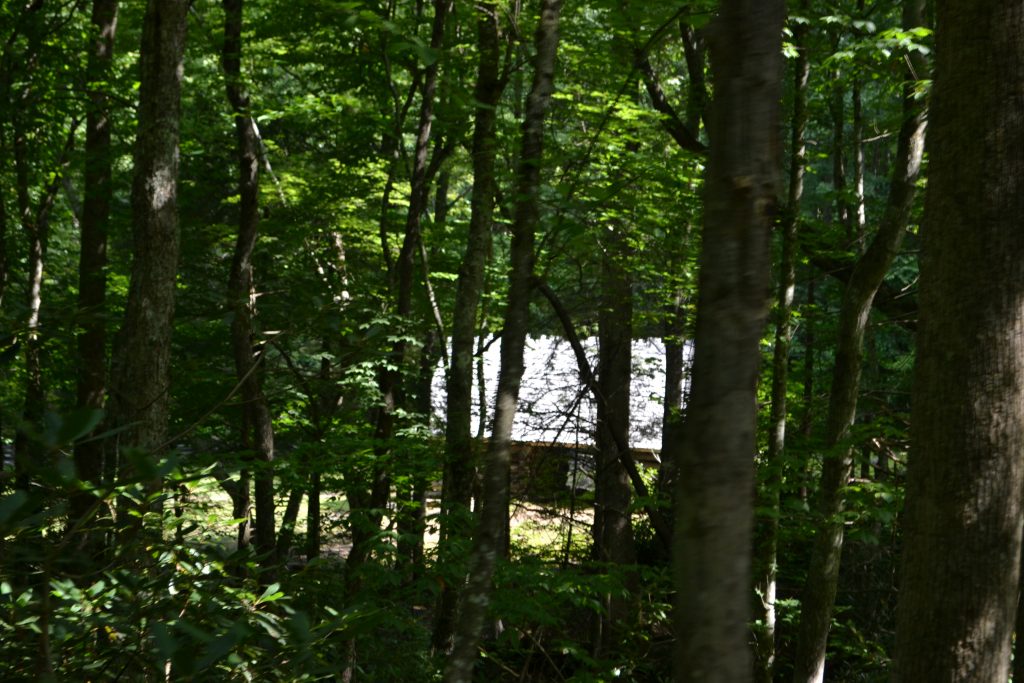
The Great Smoky Mountains is a tree lover’s paradise thriving under optimal conditions. With the perfect amount of rain and moderate temperatures, the canopy of cove hardwoods maintain a perfect ecological balance. Wildlife also flourishes in the Smoky Mountains where there is an abundance of fox, opossum, raccoon, chipmunks and especially bears.
I approached the trailhead to Trillium Gap Trail, but there were so many cars parked alongside the roadway that I decided to stop by on another day. The trail led me to the top of Mt. LeConte, but I only hiked up to Grotto Falls and back which was about 2.6 miles roundtrip.
I passed through groves of hemlock and tulip trees which brought me to the Old Road. I had seen a section of this road when I visited Noah “Bud” Ogle’s home. It was a primitive trail with large rocks that made it difficult to travel by wagon.
Through the trees I caught a glimpse of the home of Ephraim Bales, another early settler to the area. The road passed by the house and there was a noticeable drive-thru split in the home. The Bales family owned 70 acres where they had built their house, pig pen and barn.
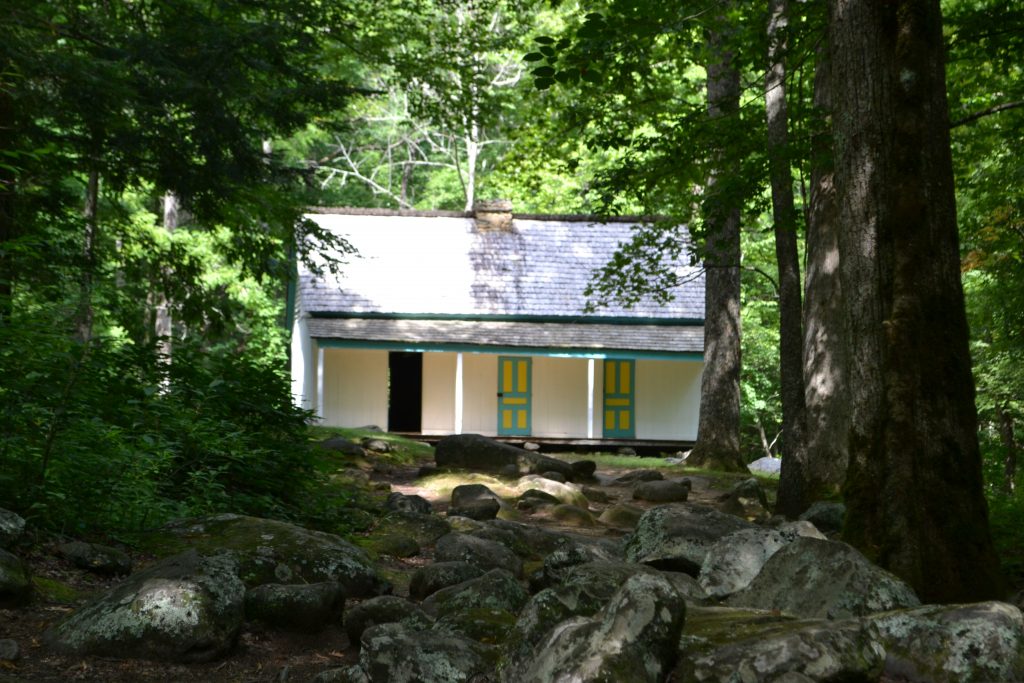
On the left side of the road is the Alfred Reagan Place. Although Alfred was a farmer, he was a carpenter and blacksmith as well, which provided more money to afford a more modern home. He later opened a store along the roadside and a mill for making bread. The home was not the typical log cabin and it was painted in the three colors offered by Sears and Roebuck. The house and the mill are all that remain on the property.
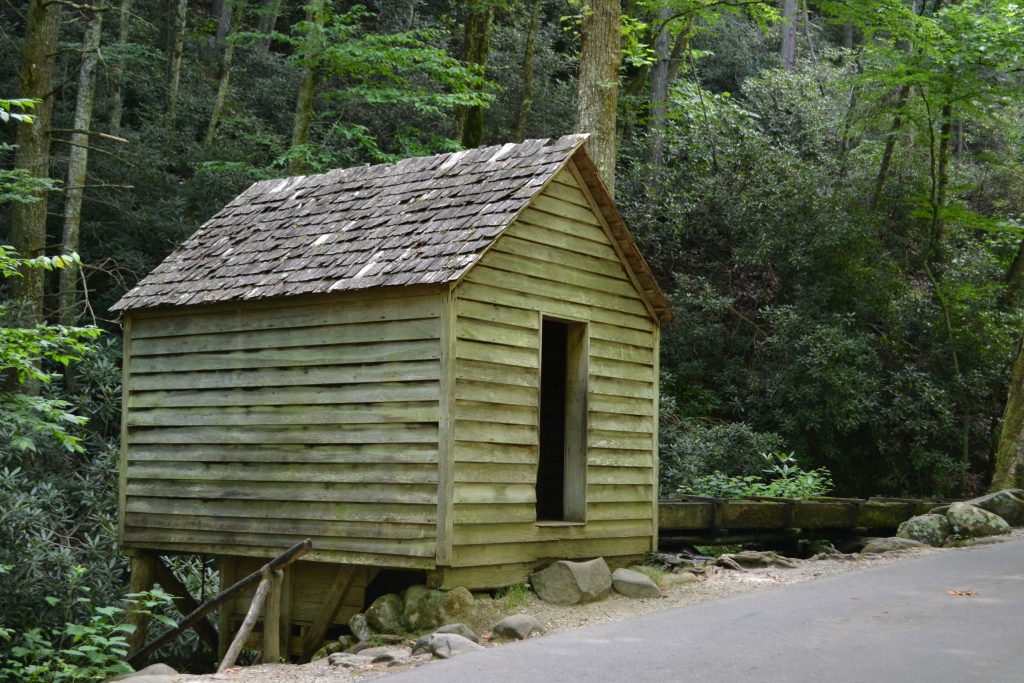
Approaching the mill, I heard the sound of water rushing through the flume, traveling down towards the wheel. The “tub mills” were given this name because the wheel was surrounded in a wooden tub-like enclosure. Eventually, these casings would be removed, exposing the wheel. Millers would usually charge a “toll” of one gallon per bushel of corn meal.
As I came to the end of the drive, I passed through boulder fields and waterfalls before entering back into “civilization”. It was a beautiful escape from the everyday life of technology and manufacturing. The demanding yet uncomplicated days of manual labor are experienced by so few. I wonder how many of us could really go back?
Did you drive the Roaring Fork Auto Tour during your visit to the Great Smoky Mountains? What were your favorite stops? I would love to hear about your experience if you would kindly leave a message in the comments section below. Many thanks for reading about my time on the auto tour! Wishing you many Happy Travels!
What to See and What to Do:
Roaring Fork Motor Tour
Just beyond the Rainbow Falls Trailhead
Telephone: 865 436 1200
- Admission Fee: There is no charge to drive the Roaring Fork Motor Tour as it is a part of the Great Smoky National Park.
- Hours: The park is open year around, though this road is closed during the winter season.
- Amenities: Pamphlet for auto tour ($.50)
- Scenic View: Spectacular views of Great Smoky Mountains throughout the drive
- Length of Visit: 1 – 2 hours, depending on whether you stop to visit the attractions
- Tips for Your Visit: Wear comfortable shoes for walking should you decide to stop at the attractions. Wildlife, such as bears, may be wandering around the property, so be on the lookout and do not approach them. We like to visit here in the afternoon as the trees provide shade from the warmer weather.
Where to Stay:
We stayed in a rental through VRBO called the Firefly Chalet.
Where to Eat:
Bennett’s Bar-B-Que
2910 Parkway
Pigeon Forge, TN
Telephone: 865 429 2200
I ordered the Carolina Pork Sandwich and the Salad Bar.
